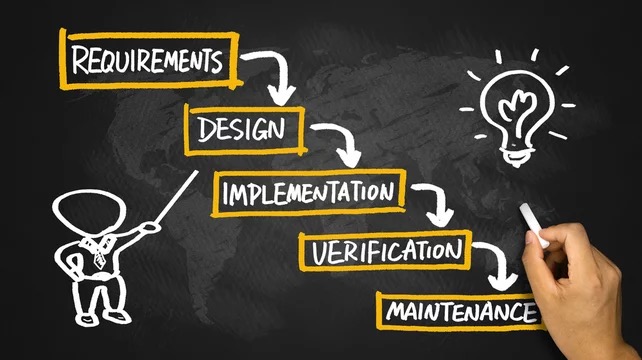
Waterfall Software Engineering Project Approach
A waterfall project is a type of project management methodology that follows a sequential and linear approach to software development or any other project. It's called "waterfall" because the project phases flow downward, much like a waterfall. Each phase must be completed before the next one begins, and there is typically little room for iteration or changes once a phase has started. That said, in some scenarios a Waterfall approach benefits over an Agile approach. PepperSprint is happy to assess and discuss which approach fits your project needs. We consider the following key phases of a waterfall project.
Requirements
The project starts with a comprehensive gathering of requirements from stakeholders, which can include clients, end-users, and other relevant parties. These requirements are documented in detail.
Design
After gathering requirements, the design phase begins. During this phase, the project team creates detailed technical specifications and architectural plans for the project. This includes the system's structure, database design, and user interface layout.
Implementation
Once the design phase is complete, the actual development work begins. Developers write code and create the software based on the specifications provided in the design phase. This phase often involves multiple programming languages and tools.
Testing
After the implementation phase, the project moves into testing. The software is thoroughly tested to identify and address defects or bugs. Testing includes unit testing, integration testing, system testing, and user acceptance testing.
Deployment
Once the testing phase is successful, the software is deployed to a production environment or delivered to the client for installation. This phase involves transitioning from development to operational use.
Maintenance
After deployment, ongoing maintenance and support may be required to address issues, make updates, and ensure the software continues to meet user needs.
